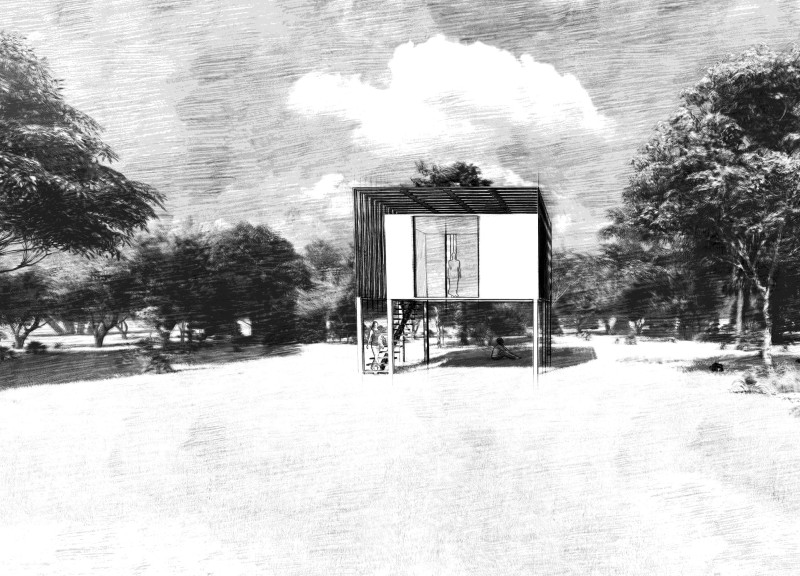5 key facts about this project
The architecture adopts a concept of "form within form," where internal spaces are designed to be both functional and reflective of the occupants' psychological needs. The overall layout emphasizes a seamless flow, allowing for a natural transition between private and communal environments. The careful spatial organization encourages interaction with the surrounding landscape, demonstrating a commitment to creating a nurturing atmosphere that respects the environment.
Key elements of the project include well-defined communal areas that are ideal for various activities, such as social gatherings and workshops. These spaces are juxtaposed with secluded zones that allow for quiet contemplation, ensuring that the building accommodates diverse needs and preferences. The architectural design achieves a fine balance, creating an inviting atmosphere that fosters community engagement while also providing the necessary solitude for personal reflection.
Materiality plays a pivotal role in the project, contributing to both aesthetic appeal and structural integrity. The predominant use of wood conveys warmth and a tactile connection to nature, emphasizing the need for comfort in spaces dedicated to relaxation and introspection. Alongside wood, concrete is utilized in foundations and structural support, illustrating a commitment to durability and resilience. Glass elements are thoughtfully incorporated to enhance natural light within the building, fostering an open feel while maintaining visual connections with the outdoors. The inclusion of steel elements reinforces the contemporary aesthetic while ensuring the structural soundness of the project.
The project's unique design approach is underscored by its flexibility in spatial usage. Rather than confining areas to designated functions, the design allows for adaptability, encouraging occupants to engage with the spaces in varied ways. This versatility is essential in creating a vibrant community hub where individuals can immerse themselves in creative and reflective experiences.
The elevation of the building further enhances its interaction with the landscape and serves as a practical response to environmental considerations. By elevating the structure, the design not only mitigates potential flooding risks but also creates an inviting focal point that enhances views across the surrounding area. The architectural choices, including the thoughtful integration of outdoor spaces, invite occupants to enjoy the surrounding natural elements, fostering a deeper connection with the landscape.
This architectural project stands as a testament to contemporary design that respects both the environment and the requirements of its users. The integration of diverse materials, flexible spatial arrangements, and a thematic focus on introspection all contribute to a concept that prioritizes well-being. For further insights into this project's architectural plans, sections, designs, and overall ideas, readers are encouraged to explore the full presentation of the project. Engaging with these elements will provide a richer understanding of the carefully crafted nuances that shape this unique architectural endeavor.


























